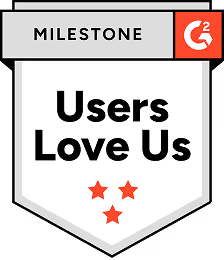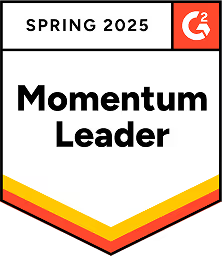5 AI-Generated Cold Email Templates For Your Next Sequence

Cold emailing is complicated. Maybe even more complicated than cold calling. There’s a lot to consider when you’re trying to convince a stranger to listen to you. It’s even harder when there’s thousands of others trying to do the same thing.
You’re reduced to a tiny text box among rows of competing appeals, usually on a screen that’s small enough to fit in someone’s hand.
The basics are this: you need a good email subject line. Scratch that, you need a great subject line. This is the one and only way to get noticed by your prospects. High open rates don’t come from an okay subject line, just like high response rates don’t come from mediocre email copy.
Whether you’re reaching out to a decision-maker or another rep, your cold email campaigns have to feature copy that’s catered to the needs of your prospect. To do that, you need to do some research. When you send an email that’s personalized, your prospect is more likely to be receptive.
No one loves a mass email. That’s what spam folders exist for at this point.
But your job isn’t to avoid getting marked as spam. It’s to sell. So keep reading to learn about other important considerations for your cold emails. With the help of Regie’s AI, we’ve put together five templates to inspire your campaigns. After each template, we break down why it works and how to make it yours.

Why It Works:
- 2-word subject line - In an analysis of over 130,000 sales emails, Regie found that the shorter a subject line, the better it performs.
- Personalization in the first line - An email has almost no chance of being opened if there isn’t personalization in the subject or initial line of an email. Ideally, there’s personalization in both. Using your recipient’s name and the name of their company is a subtle (and easy) way to personalize a message. Any details or information that indicate an email was written specifically for the person reading it increases the likelihood of a response.
- A statistic in the body copy - People like statistics for clearly communicating information and for the basis they give to claims.
- Word count 111 - A Regie study found that response rates decline when an email’s body copy exceeds 120 words.
How To Make It Yours
We took a hint from Josh Braun on this template’s subject line. His “[Emotion] this?” subject line is a way to tap into the psychological fact that people will go pretty far to avoid pain, more so than they will for pleasure. Pair the word “this” with negative emotion, like dread or despise to commiserate with your prospect on their particular pain point.
Your first line should mention the recipient’s company at the very least. This is the text that shows up in the email’s preview before it’s clicked on, providing you with the opportunity to signal that your message is in fact relevant to your prospect.
A simple way to mention their company is by stating that you’re curious about an aspect of their strategy, toolkit or approach to a pain point.
After mentioning their company, provide data that supports your inquiry. This template uses an industry trend to emphasize the relevance of AI as a tool. Find a report or statistic that does the same for your company and pass this information on to your prospect. This doesn’t mean filling an email with lists of numbers, but including data is a way to appeal to number-oriented prospects and support your claims.
Don’t forget to reiterate the overarching takeaway of the data you include to establish the value of your company.
Now you can explicitly ask your prospect if they’re using an iteration of your solution. Provide a general description of the pain point you resolve and communicate to your prospect that the issue doesn’t need to persist. If their schedule is demanding and they’re laser-focused on big picture goals, it’s possible they haven’t considered solutions for the pain points that have become a part of their routine.
The closing in this template is essential. It doesn’t include value propositions, just a brief, low-pressure invitation to continue the conversation. As an initial email, you’re almost guaranteed to have to follow-up again, so don’t pack all your value propositions in right away.
Instead, this template communicates value by rendering an old practice, tool or problem obsolete. Additional value propositions are unnecessary and may come off as heavy-handed or pushy.
Tip: When it comes to writing, the opportunity to edit out more conversational phrases like “I’m curious” arises. But, when used carefully, they can make your message feel more human. This will help your prospect connect with you and not feel like they’re just another step to your quota.

Why It Works:
- 4-word subject line
- A question in the subject line
- Personalized - CampaignMonitor found that personalized emails get 14% more click-thrus.
- Compliments the recipient company - Very few people are impervious to compliments.
- Thanks the recipient - Shows your prospect you appreciate their time rather than expecting it.
- Word count 114
- Call to action - This provides your prospect with a clear next step. Remember that one CTA is enough; using multiple makes the next step unclear.
How To Make It Yours
Lightly research your prospect’s company to customize the template’s compliment and build off it to create a need for your company. In other words, “because you’re doing well at that, there must be a need for this.”
However, you should make sure you actually do the research. Don’t compliment a company’s social media or website if you’ve never seen them. You should mean what you’re saying. Plus, when you’ve actually looked into your prospect, you’re able to get more specific.
Maybe you start with socials but that helps you find a blog written by your prospect. Then that’s what you should be complimenting. Prove to your prospect that you’ve legitimately done the research and mean what you’re saying.
Follow with two of your company’s value propositions. Use the first to introduce and describe your company, and use the second while asking if your prospect has any interest in hearing more.
The beginning of the body copy is already personalized, but adding in a final personalized detail that feels like a natural remark is subtle but useful. This template mentions a day of the week. A small touch like this communicates that the message was written in real-time and specifically for your recipient, versus a mass message that’s been recycled again and again.

Why It Works:
- Tip: Pair your prospect’s name with this subject line so it looks something like “{{!! RECIPIENT NAME }}, You Hate It Don’t You?” - According to CampaignMonitor, a subject line with a recipient’s name receives 26% more opens, and a SaleCycle study suggests even 46% more.
- A question in the subject line - A Yesware study found that subject lines that are questions receive 10% more opens.
- A “click to know” subject line
- A question in the first line - A Boomerang study found that emails with 1-3 questions get 50% more responses. By putting one in the first line of your body copy, you’re ensuring that your prospect sees it before they even open the message.
- Word count 109
How To Make It Yours
Another “click to know” with the prospect’s name in the subject line. The thing that you assume your prospect hates should be a pain point that your product or service makes easier or solves. Make sure to use detail to describe why the pain point is worthy of resentment.
Mention their company while addressing that your prospect might be looking for solutions. Use another pain point and follow it with only a brief value proposition. This template is about commiserating with your prospect and sharing in the frustration surrounding an aspect of their work.

Why It Works:
- 2-word subject line
- Intriguing subject line - Leverage the power of curiosity to catch a prospect’s attention.
- Uses social proof
- Mentions recipient company
- CTA
- Word count 116
How To Make It Yours
With this template, you need a two-word subject line that’s vague but enticing. Take the most revolutionary aspect of your product or service and pair it with the name of your prospect’s company. This template’s body copy is direct and entirely made up of value propositions to cater to buyers who are strictly interested in information, not small talk, so this guides the way the subject line is enticing.
For example, if the body copy was less direct and more conversational, the two-word subject line might be something a bit more casual like “ AI Rumors” or “Goodbye Copywriting.”
Use social proof, data and a CTA alongside your value propositions, since this template is straightforward in both use and tone.
Tip: Similar to social proof, offering your prospect a free trial or an ebook is another way to increase your email’s perceived value. Ultimately you’ll be asking them for something, so offer up something of yours first.

Why It Works:
- Unusual subject line
- Mentions recipient company
- Uses a list - Communicates information in a clean, digestible way and requires fewer words than complete sentences.
- Word count 109
How To Make It Yours
This template’s subject line will stand out in an inbox, and it acknowledges the humor of the whole cold email ritual we’ve become accustomed to in sales. Some prospects will appreciate a somewhat meta observation of the culture.
Again, the style and tone of your cold emails should be eclectic, because odds are, your list of prospects is too. Accounting for various personalities means trying different approaches and not putting all your eggs in the same stylistic basket.
List the capabilities of your product or service as a way to demonstrate value without defaulting to the same one-line value propositions you use in your other emails. Sometimes plainly speaking about what your company does, provides better context for use case than value propositions.
Refer to the prospect’s company to personalize the message and include a list of attributes or value propositions about yours. Your list should use numbers or data where it can.
Go Forth and Email
Those are the five templates, and hopefully, you feel inspired to go forth and email. If you’d like more of our templates, just click to download our 15 High Converting Cold Email Templates guidebook. It’s free, and it has more insights, examples and instructions for making a template your own.
As you draft your messages, keep in mind that variety is an asset, and many elements of our templates can be mixed and matched. Focus on your subject line, word count, sales pitch and call to action, but above all, prioritize your prospect’s needs.
Or you could always consider using Regie, and never read another blog about cold emails again, let alone write one.
FAQs
Read more posts
View all BlogsNeed more help?
If you still have questions, make sure to check out our Help Center: there, you'll find all the tips & advice you'll need to get your team up & running with Regie.ai.









